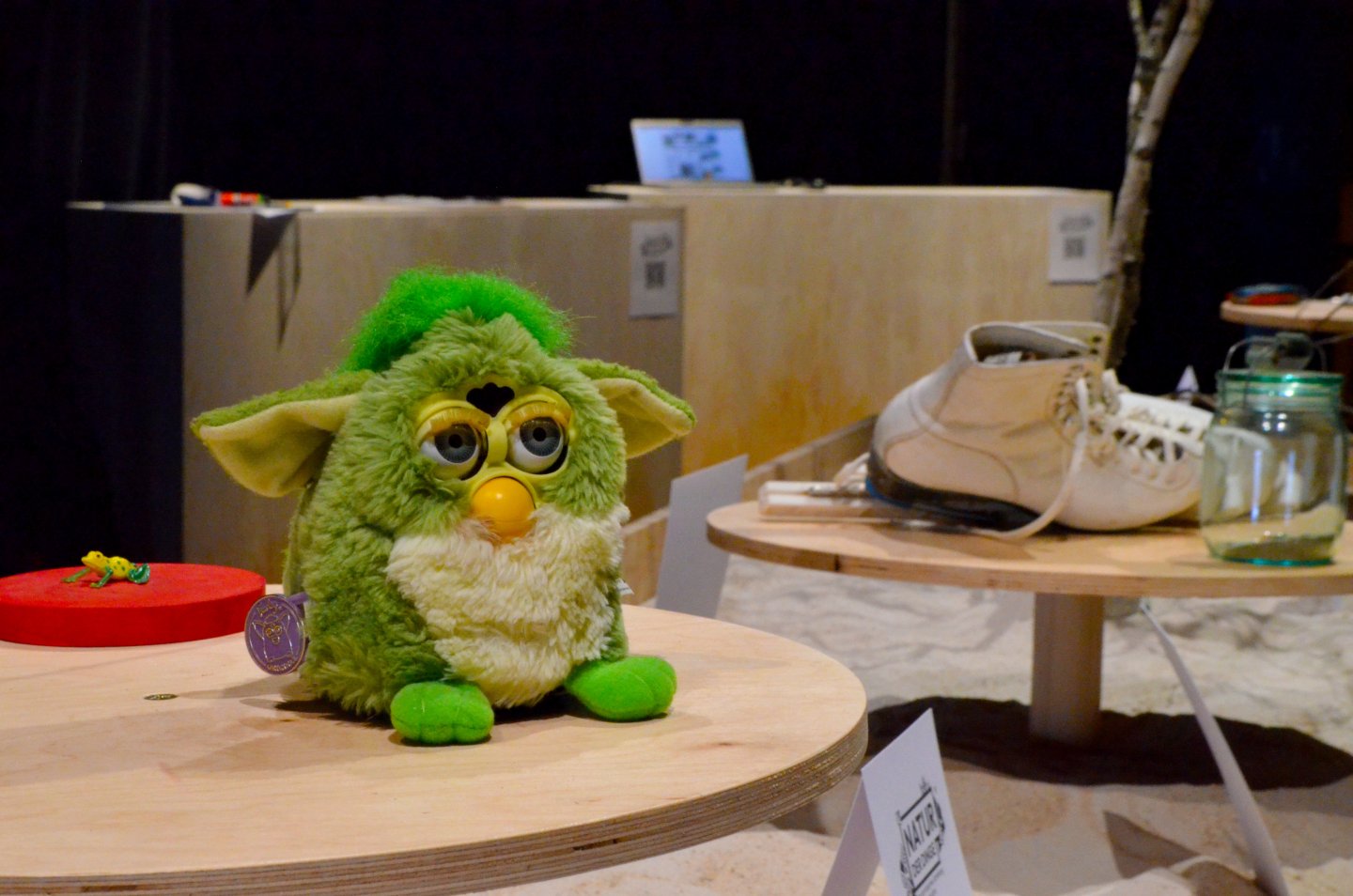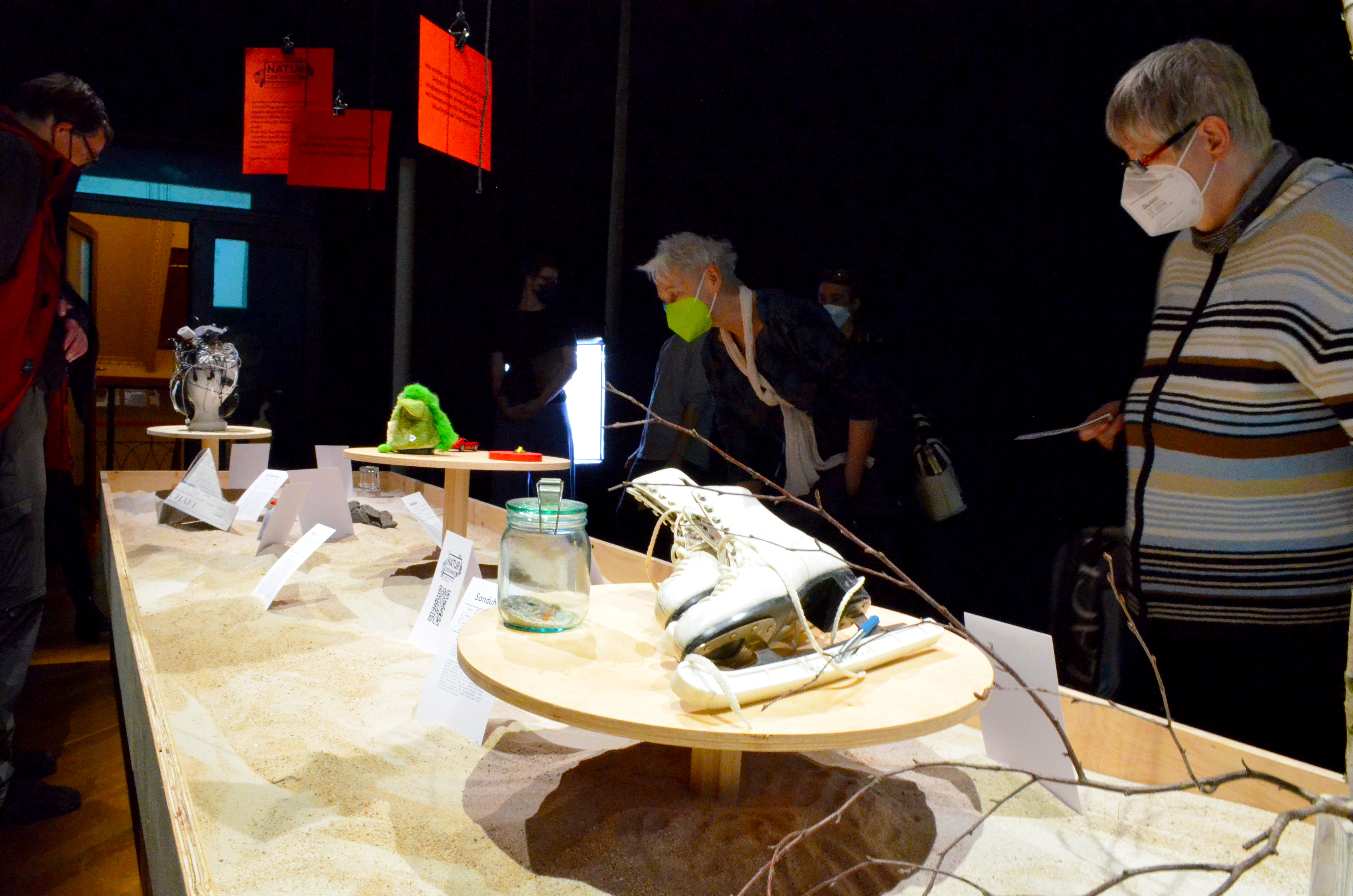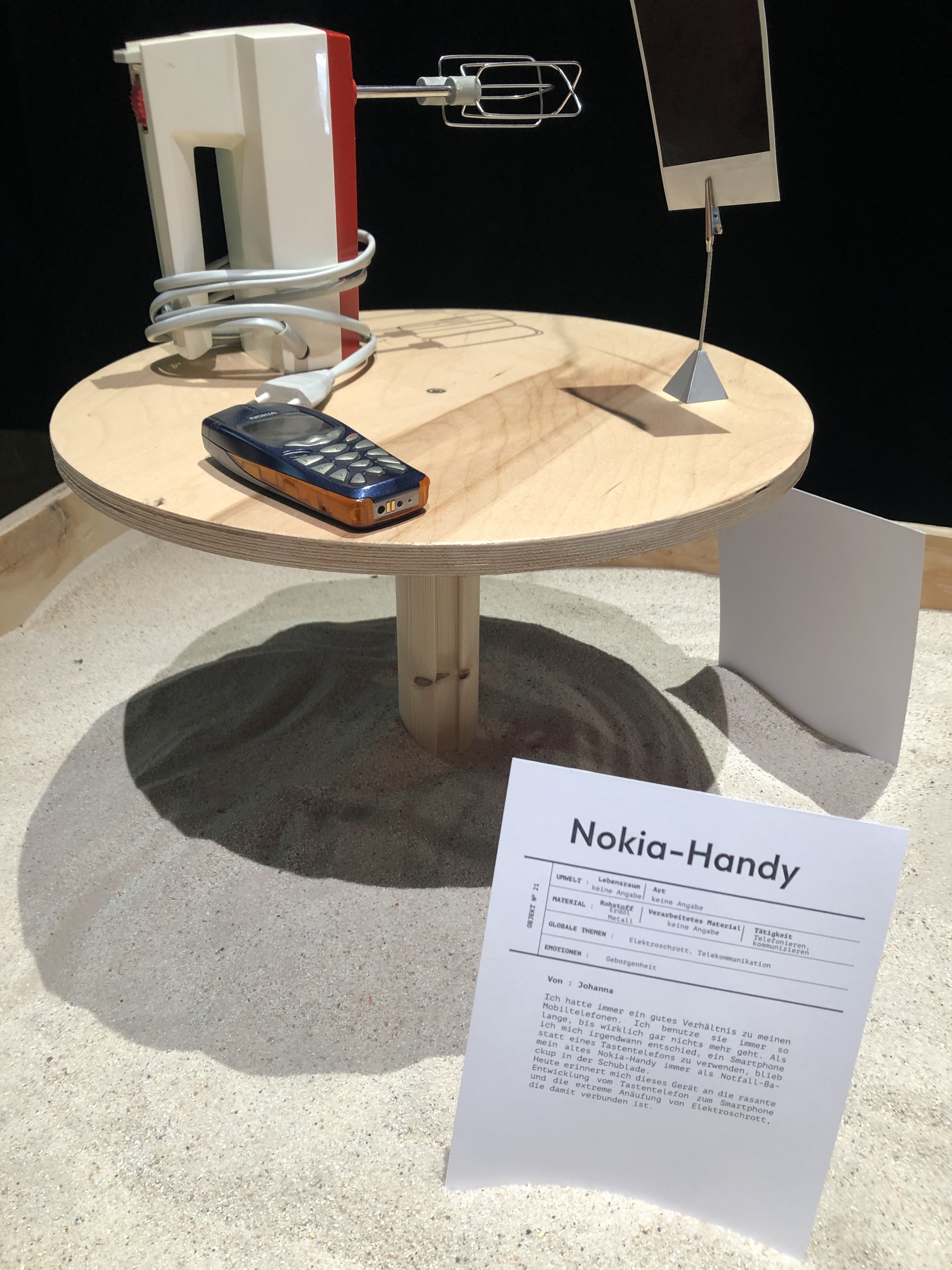
The Anthropocene is everywhere! And you might even encounter its traces in Berlin’s “Neuköllner Oper” - How come?
A contribution by Dr. Claire Förster, ethnographer and research associate in the project "NuForm" at Museum für Naturkunde Berlin
In October and November 2022, the opera offered its visitors “New Songs From the Earth”, a musical theatre show developed in collaboration with Syrian and German authors. Given its theme – changing (relationships with) natures – it seemed only ‘natural’ that the Museum für Naturkunde Berlin should have its proverbial ears pricked! Since the project “Changing Natures” is concerned with that very topic, the match was too perfect not to be made. Facilitated by set designer Sabrina Rossetto, “Changing Natures” set up shop in one of the opera’s studios.
To do what?
One of the project’s goals is to understand how and if the Anthropocene – the Age of Humankinds – can be collected, archived and possibly exhibited. This binational effort between Berlin’s and Paris’ Natural History Museums has taken the guise of a participatory digital collection. The platform invites its users to contribute objects that they associate with the Anthropocene. In the collection, their stories can be explored, commented on and can even be extended.
Similarly, a physical installation with some (temporarily) donated artefacts by participants and their stories took temporary lodge at Neuköllner Oper. On four occasions over the course of the Song’s of the Earth’s being performed, people could encounter donated objects or bring their own to be added to the collection. If ‘empty-handed’, people could also donate virtual objects, i.e. items that they would have brought. Even commenting was possible by making use of bright pink ‘comment cards’ that the museum team provided.
So, how do people answer the question of how to symbolise the ‘Age of Humankind’?
One of the most-heard statements at Neuköllner Oper might surprise you (or not). Apparently, the Anthropocene materialises in people’s basements!
What is in those basements?
The ‘anthropogenic’ objects that people thought up cover a broad variety: From wood to ice-skates or old-fashioned computers, people ‘collect’ various things for safe-keeping.
But why? And how does that link with the Age of Humankind?
Most people argue that they amassed their collections with the intent of using the objects in the future. They held onto what was believed to serve a new (or its old) purpose forth-coming. The wood might be built into some new device. An old computer’s constitutive parts, too, might find a new ‘use-value’ in some other machine.
But ice-skates?

That object was used for one particular purpose only: Wintry skiing across the frozen surfaces of water ponds nearby. Many visitors told us that they, themselves, had ‘the same pair’ back home. In their cellars (where else?). It was kept, despite what most people agree: “Winters just don’t get as cold anymore.” The use-value of the ice-skates is, actually, gone.
And yet skates are kept rather than being thrown away. Because their new value is a nostalgic one:
Throughout the evenings in which the display was visited and supervised by members of the Changing Natures team, people oftentimes responded to the objects in rather emotional ways. They expressed a nostalgic attachment to the objects, because donated items represented ‘what once was, but is now (forever?) gone’.
Nostalgia comes up with the idea of really cold winters associated with ice-skates, but also with ‘un-smart’ phones. More dramatically, people invoked extinct species that defy being displayed: The object that would have represented ‘The Era of Humans’ is a void.

Apart from alluding to a past that cannot be brought back, thinking about the Age of Humankind also made people bring up the subject of “waste” a lot.
They argue, “we are producing too much waste” in this day and age. Meaning that things are being replaced with ‘newer versions’ even though the old ones were still technically functional.
Before, in the age that the objects oftentimes refer to, they re-used and repaired as much as they could to extend the objects’ lifetime. Old phones could be “thrown from a church spire” and, after crashing to the ground “you just reassembled them”. Socks, too, could be mended. It took time and care, of course, but things were not as easily and quickly replaceable as they are now.
Now in the age of over-production, consumption and producing “rubbish” in several ways: Objects are not built to last as long anymore, i.e. they are already rubbish by design. Or they are turned into rubbish, because you dispose of them more quickly, given how easy it is to find a newer substitute.
Visitors thereby suggest a ‘before’ and ‘after’ of the Anthropocenic turn that they feel they experienced:
Before was when we invested more care to keep objects alive. Now is when we produce waste carelessly. This is “the way we live” – the Anthropocene. And our ways of life, as people are inspired to reflect, “exploits nature”, takes away living spaces from animals and plants and makes us “lose” things…objects of the past. Including actual species and our relationship to ways of life that included being able to skate on frozen lakes.
Only, most of the time – unless prompted by an installation in a local opera house – ‘the Anthropocene’ and its changes are difficult to perceive or describe. They are part of our everyday realities, pushed and reinstituted by much larger forces. One that was named repeatedly was ‘industry’, often in line with technological progress and powers wielded by market-logics. ‘Higher, faster, better’-paradigms, people pondered, were replacing other social norms, associated with care and connection: To one another and nature. Those connections that we lose and have lost, without necessarily being aware of it.
Against this backdrop of loss, the objects people lent to the collection of the Anthropocene have a new practical value: They are educational things that tell a tale of by-gone times. Times that we might miss. And times that are informative for future generations in such a way that people want the objects to tell their stories.
Rather than letting them be useless ‘rubbish’, donating objects to museum archives, and especially putting them on display, means people can share these stories that they value. Thus, Changing Natures gave the objects a stage to acquire such a meaning, rather than remaining stowed away in basements. Even though the question “why didn’t I just throw that away?” might still be inspired in those who see relics of our ever-changing ways of life.
You, too, might browse and reflect what these objects tell you. Have a look around: The Anthropocene is everywhere, also online! What would you want to preserve to express your (changed?) relationship with nature? What is not rubbish but a teaching-tool #forNature hidden in your basement?
All images by Katharina Kücke, Neuköllner Oper

Share on social media